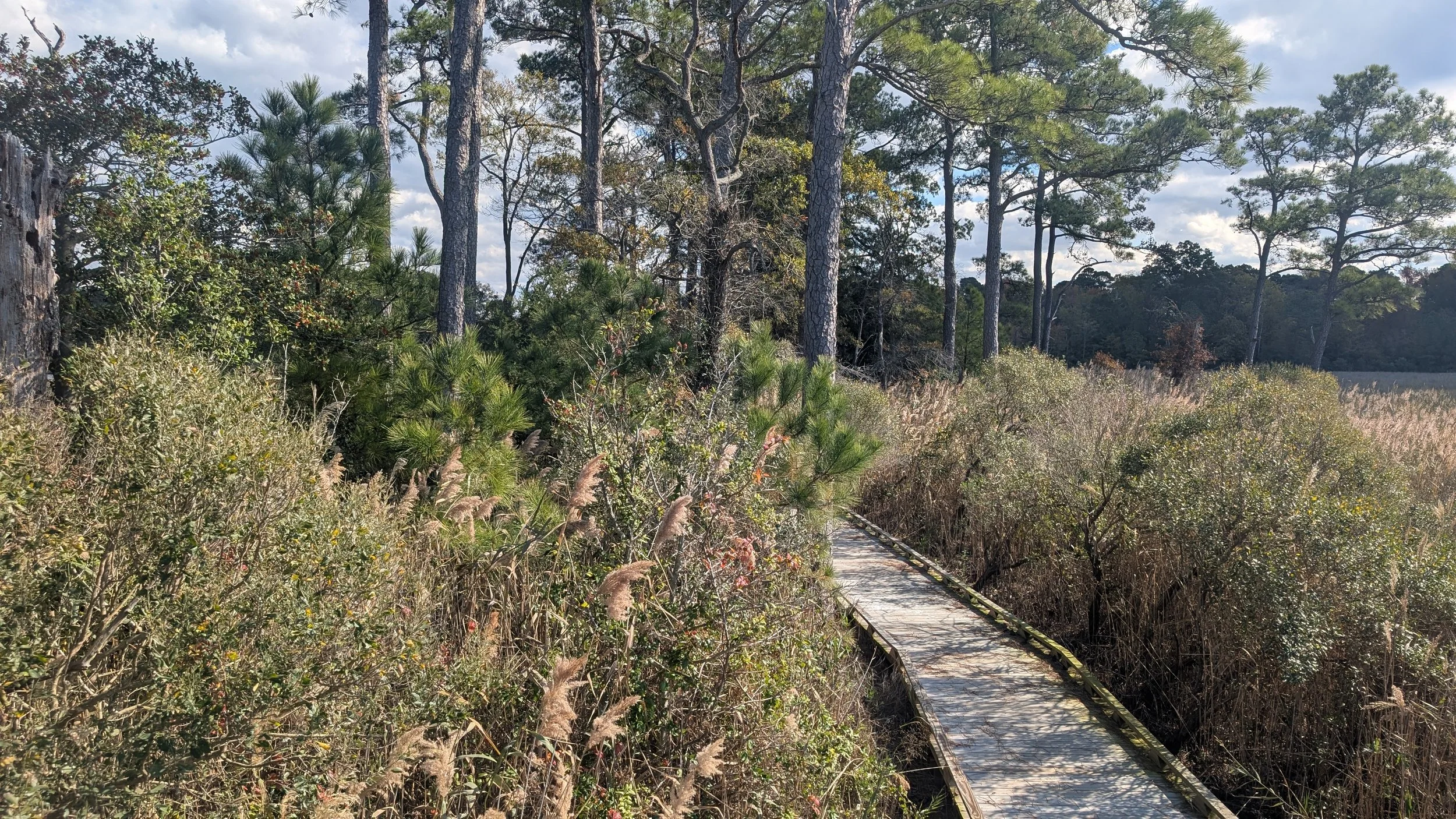Virtual Field Trip: An Island within A Bay, Eastern Neck National Wildlife Refuge
Exploring Eastern Neck National Wildlife Refuge (NWR) is a memorable day trip for any birder or plant community enthusiast. This refuge is a 2,285-acre island, just off of Maryland’s eastern shore, nestled in the confluence of Chesapeake Bay and the Chester River. This ecologically vibrant space was historically a hunting ground for indigenous peoples and now is protected as a refuge for the over 240 species of birds that inhabit this diverse island. The refuge is a tapestry of different habitats- brackish tidal marsh, forest, meadow, with interspersed cropland.
Eastern Neck National Wildlife Refuge, a boardwalk trail amidst brackish tidal marsh.
During this Fall field trip, winged or shining sumac (Rhus copallinum) was the botanical showstopper. In the meadows adjacent to the brackish waters, the hue of deep red filled the landscape. Stopping for a puckering pop of lemony-citrus, the little seeds create a memorable taste sensation. Harvest when rain hasn’t dampened the oils that coat the fine hairs on each seed. Freeze until ready to process or dry the seeds immediately in a low humid environment. Create homemade Middle Eastern-inspired Zaatar seasoning or infuse in vodka for a delightful blushed addition to cocktails.
Winged or shining sumac (Rhus copallinum) massed in meadow
Winged or shining sumac (Rhus copallinum) seed head
Given the warm Fall day, a Variegated fritillary butterfly arrived on the open meadow path warming itself with the sunrays. Other field notes of interest were the species;
Northern seaside goldenrod (Solidago sempervirens)- late blooming source of nectar for pollinators
Northern bayberry (Morella pensylvanica)- scratch-n-sniff leaves and fat-filled berries for migratory birds (and historically bayberry candles!)
Goundsel tree (Baccharis halimifolia)- delightful winter interest seed fluff
Devil’s walkingstick (Aralia spinosa)- peppercorn tasting seeds, with overall structure mimicking elderberry from the distance
and a delightful diversity of oaks and pines.
Variegated Fritillary on meadow path
Devil’s walkingstick (Aralia spinosa)
Final ponderings from this field trip was the historical context of land “ownership” of this island and how colonization has shaped our relation with land. This island wasn’t acquired by the U.S Fish and Wildlife Service in its current refuge designation until the mid 1960’s after a boon of development rose in the area and the need for conservation was clear from the community. Formerly the space was acquired by Colonel Joseph Wickes and eventually his heirs. Starting as early as the mid 1600’s the island was utilized as a place to grow tobacco and support other land-intensive agricultural practices such as logging, dairying, raising sheep and horses, growing peaches, pears, and asparagus, and then exporting goods from the family shipyard.
The development of these crops, of course, followed after indigenous peoples stewarded this land for shellfish and other forms of naturally occurring sustenance populations, living alongside the migratory wildlife and shifting sea level rises. Colonization from European settlers forced out this way of land-based living of the Ozinie native peoples. We now live in a modern era of conservation, returning to a form of stewardship, but that of which restricts human interaction to the occasional recreation activity and land stewardship resorted to a few trained park staff with herbicide backpacks.
Modern conservation is a blessing and a curse, on one hand land is returned to public access and protected from further development, though on the other this land now has restrictive use and under “stewardship” practices discerned by the government or land trust, not necessarily that of informed non-toxic traditional ecological practices. Colonization has shaped this island.
Eastern Neck National Wildlife Refuge, looking into the Chesapeake Bay and Chester River confluence in Fall 2025






